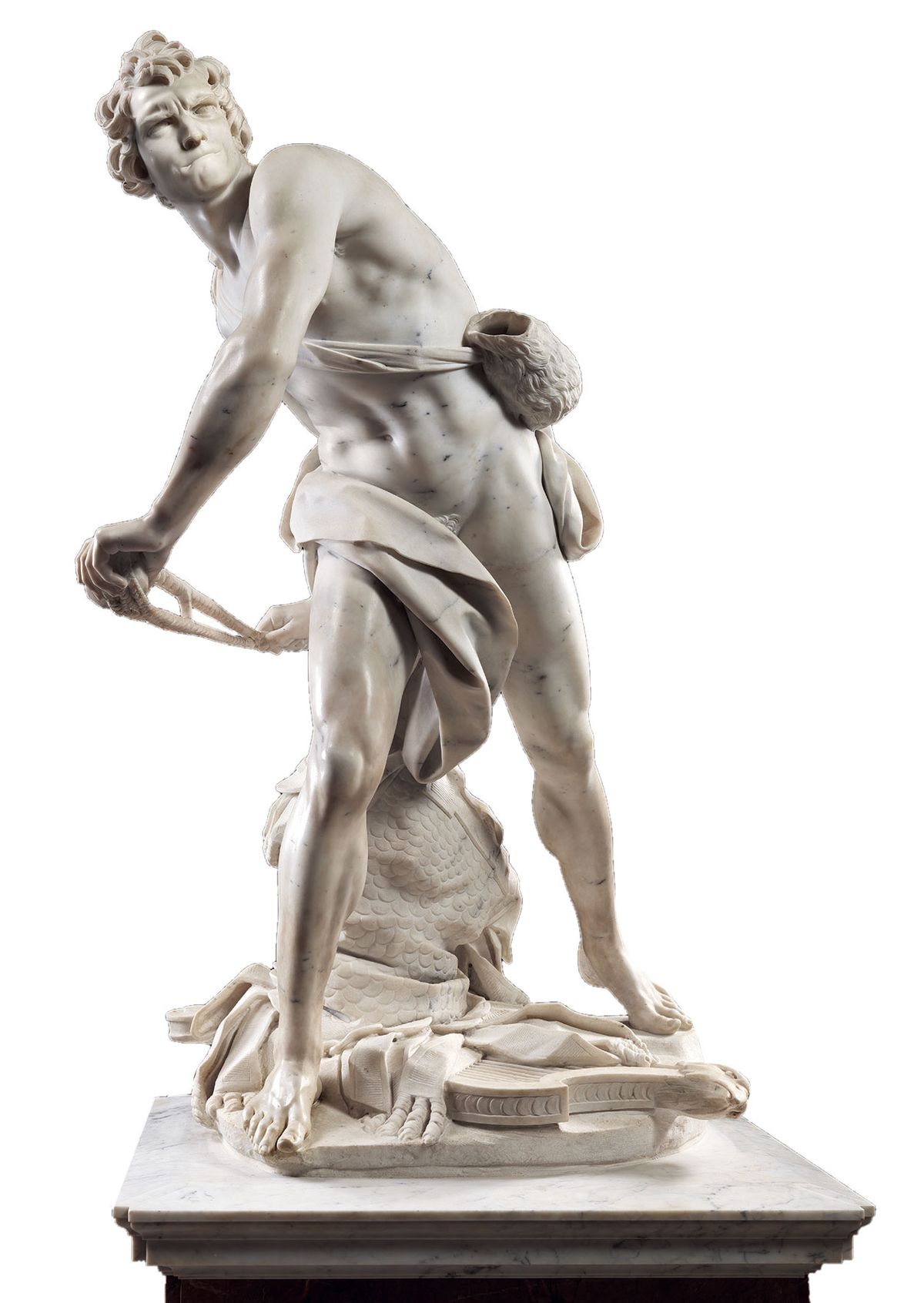The twisted body of Gian Lorenzo Bernini’s David—muscles taut, brow furrowed in concentration, as he is poised to release the stone that will defeat Goliath—must have been an impressive enough spectacle to those who first saw it in 1624, even without the myth that quickly emerged about its creation. According to contemporaries, Bernini (1598-1680) had used his own reflection as source for this sculpture, thanks to a mirror which his patron and friend (and future Pope) Cardinal Barberini had held up while the sculptor contorted his face and imagined himself as the young biblical hero. Apparently blessed by a gift never to have struck a false blow on marble, Bernini took just seven months to complete this sculpture, which perhaps more than any other work exemplifies an artist who sought to visualise, in the words of Livio Pestilli, “movements of the soul through movements of the body”.
In Bernini and His World, Pestilli (professor emeritus and former director of Trinity College, Rome) treats the veracity of this fun but suspiciously extravagant story—particularly Barberini’s role as the mirror-holder—with scepticism. But whether the anecdote is based on fact or just pure fiction is not the point. What matters is that the story was told at all. Indeed, throughout this fascinating book, Pestilli queries the extent to which contemporary sources can really be trusted. But in so doing he asks the more pertinent question of how these accounts sought to present Bernini: what kinds of image-making were at play, and what were their ultimate aims?
Life and times
Bernini is a well-documented artist. A wealth of contemporary accounts survives and scholars have produced copious volumes on his life and works over the subsequent centuries—from Johann Winckelmann in the 18th century to Rudolf Wittkower’s and Irving Lavin’s seminal publications of the mid-20th century, to the recent studies by Genevieve Warwick and Carolina Mangone. We would be justified in asking, “Why another book about Bernini?”—a question that the author all but poses. But then, as stated in the title, this book is about Bernini’s “world” as much as it is about the sculptor himself.

Gian Lorenzo Bernini’s Self-portrait (around 1678), made using black-and-white chalk on buff paper Royal Collection Trust/© Her Majesty Queen Elizabeth II 2022
Pestilli’s “kaleidoscopic approach”, as he phrases it, immerses the reader in 17th-century Italy, as it weaves in and out of biographical detail and broader contextual material, punctuated at every turn with beautiful stories and contemporary accounts, while its sumptuous illustrations remind us of the superb artistic achievements.
In Pestilli’s hands a discussion around Bernini’s relationship to his Neapolitan roots becomes an examination of the attitudes towards regional prejudices prevalent at the time, as well as contemporary debates around artistic style and talent. An account of Bernini’s trip to France as architect and adviser for the rebuilding of the Louvre in 1665 leads to a discussion of cross-cultural exchange and international rivalries.
In sweeping through the world in which Bernini lived, the book takes in treatises on poetry and painting, while discussions range from international diplomacy and political factions to artistic education and fashion. Every story, every anecdote, gives us fresh insight into the world Bernini inhabited, but also the artistic world he himself made. We see his influence on his contemporaries, such as Francesco Mochi, and on later generations of sculptors such as Antonio Canova, as well as what are described as the “different lenses” of his legacy. Pestilli’s innovative approach offers exciting new perspectives on the artist, and makes you look afresh at the man, his work and his world.
• Livio Pestilli, Bernini and His World: Sculpture and Sculptors in Early Modern Rome, Lund Humphries, 288pp, 140 colour & 27 black and white illustrations, £60 (hb), published 21 March 2022
• Breeze Barrington is a freelance writer, researcher and critic. She specialises in 17th-century artistic cultures and is currently writing a book on the women at the court of Mary of Modena


